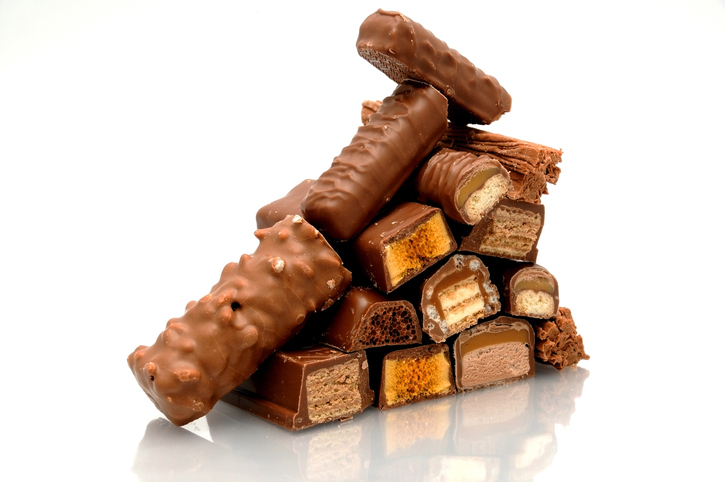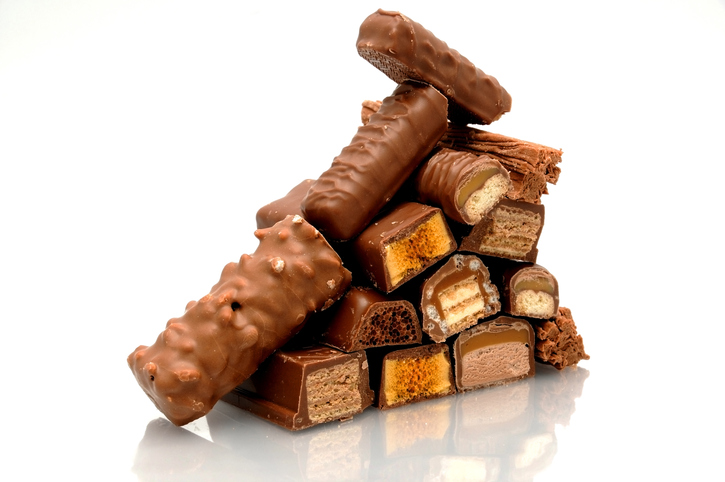How your favorite candies got their names.
Kit Kat
The current and most famous form of Kit Kat consists of a bar of four “fingers” of cookie wafers covered in chocolate. That’s a bit different from the first iteration of food sold under the name. The Kit-Cat Club was a place where late 1800s London politicians met, where they were served Kit-Cats—which were mutton pies. That place (and the pies) were named after an abbreviation of the club’s owner and pastry chef, Christopher Catling. The Kit-Cat and its food became so famous that English candy company Rowntree’s trademarked the name “Kit Kat” and started selling the Kit Kat Chocolate Crisp in 1937.
Snickers
Like a lot of other famous candies, such as M&M’s and the Mars Bar, the packed-with-peanuts Snickers bar was a creation of Mars, Inc., a giant of the candy industry. Company founder Frank Mars invented the Snickers bar in 1930. He named it after one of the racehorses he owned: Snickers.
Three Musketeers
This is arguably the strangest named candy. What does whipped chocolate covered in milk chocolate have to do with Alexandre Dumas’ beloved adventure novel anyway? And if it’s going to be named anything, it should be named Two Musketeers, as there are only two elements to the candy bar. The name has nothing to do with French literature or its current composition, but it makes perfect sense when we go back to the candy’s original formulation. When Mar’s introduced it in 1932, there were three flavors of candy in one package: chocolate, vanilla, and strawberry. Those other two, less popular flavors were phased out.
Baby Ruth
Two stories about how the nougat-peanut-chocolate concoction got its name have floated around for years. One says that it’s named after Ruth Cleveland, daughter of President Grover Cleveland. The other story holds that it’s named after legendary baseball slugger Babe Ruth. So which one is true? The Babe Ruth one…sort of. The Baby Ruth bar hit stores in 1921, more than 20 years after Cleveland, a not particularly popular president, had left office…and 17 years after Ruth Cleveland had died. But it was around the time that Babe Ruth was getting more and more famous, and the Curtiss Candy Company wanted to cash in. Neglecting to actually contract (and pay) Babe Ruth for an endorsement deal, the chocolatier named their product Baby Ruth — just barely skirting the law — and then coming up with the fake Ruth Cleveland story to cover its tracks.









